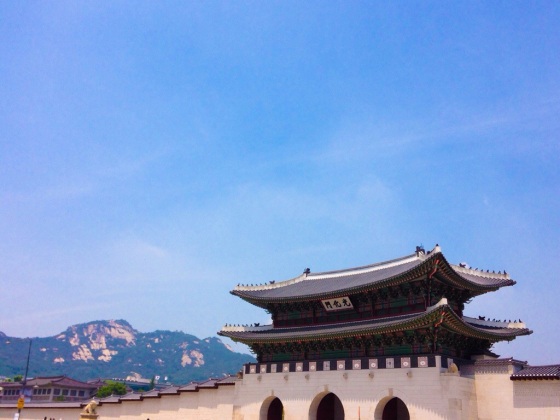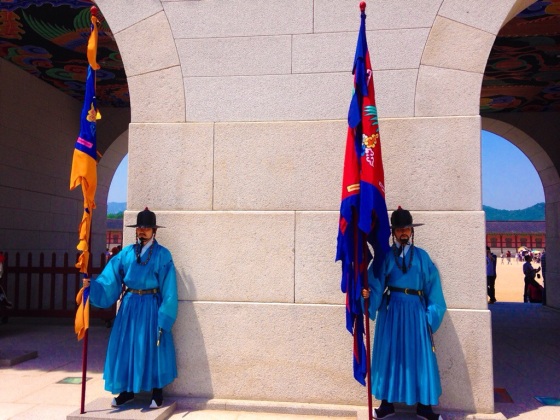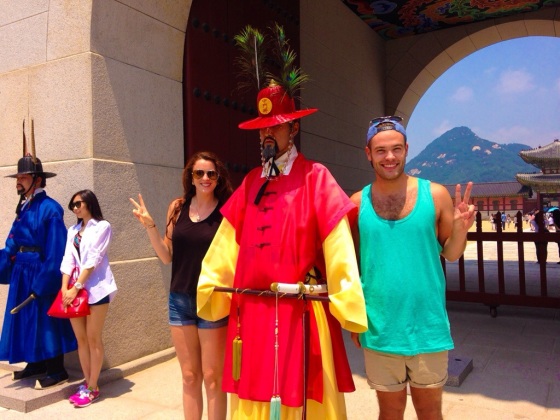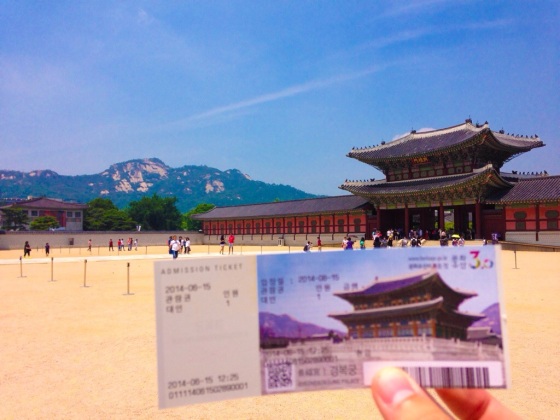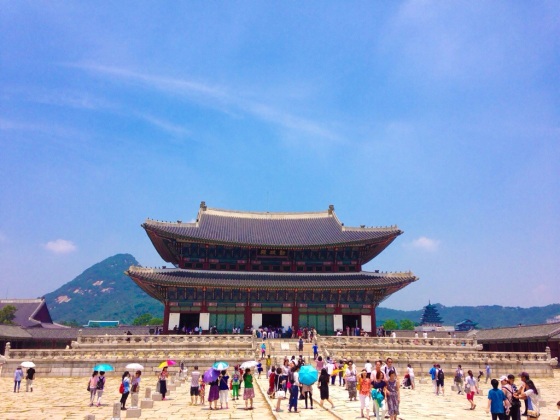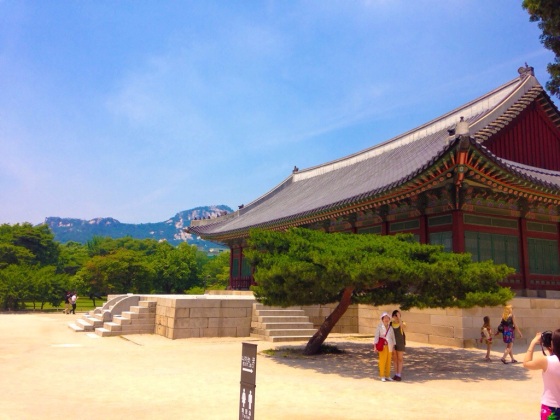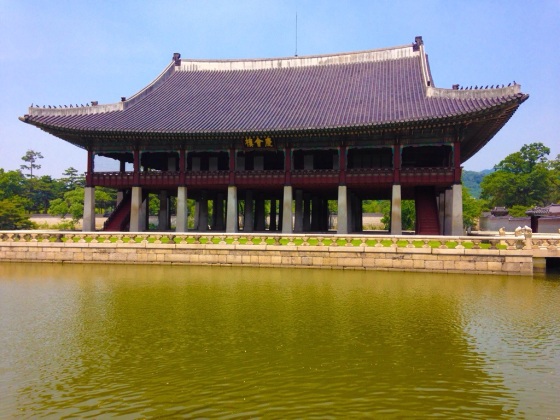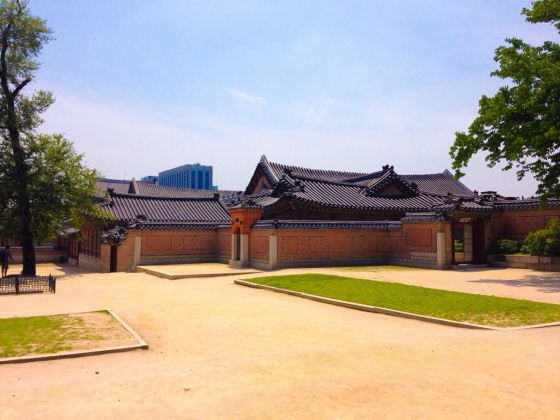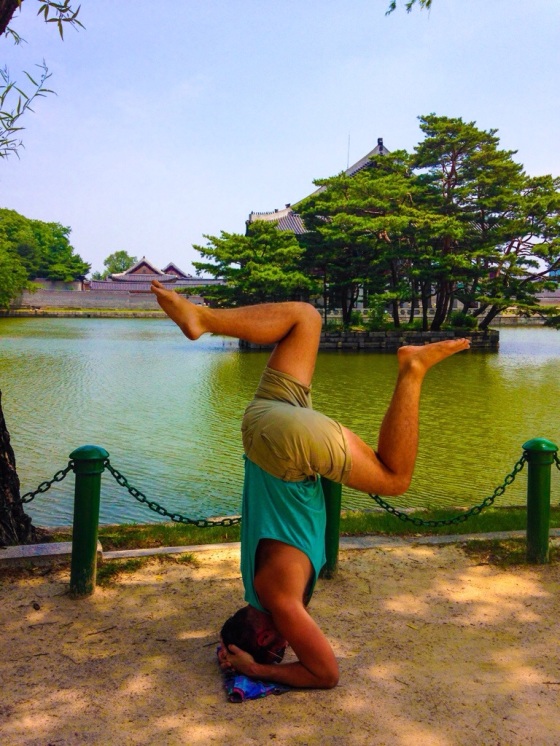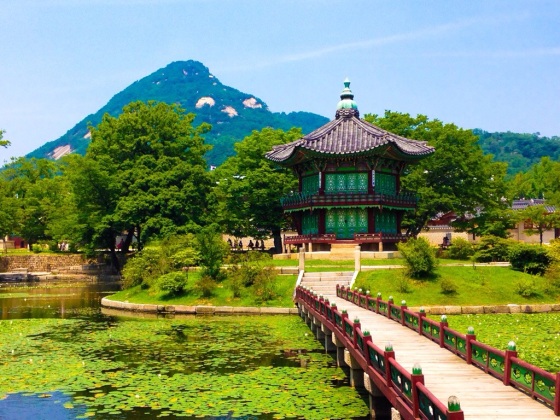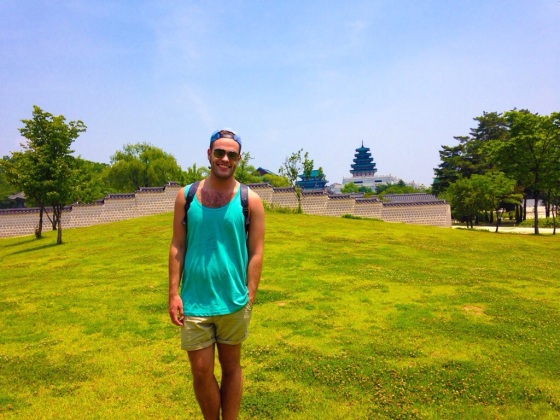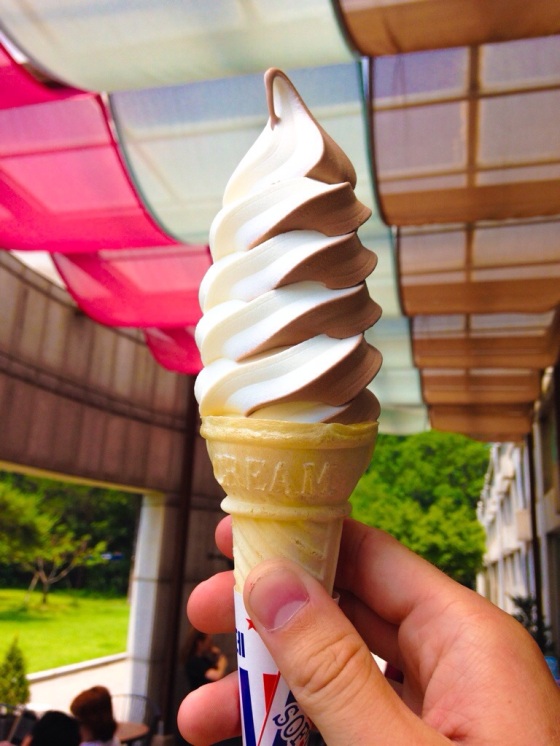This is a Korean Bucket List post. Check out the rest of my list here.
On my very short list of “things I wish I had done differently during my year in Asia”, (I hate using the word “regret”), “spending more time in Seoul” would definitely place towards the top of it. Collectively, between a trip in August with Jess and Maddie and in June for Ultra Music Festival, I only spent approximately 52 hours in South Korea’s capital city during my year abroad. While my aforementioned trip to Seoul for Ultra Music Festival was one that I was frequently stuck in transit for, I did manage to prioritize a trip to the famed Gyeongbokgung Palace, located in the heart of Seoul.
Gyeongbokgung Palace, which literally means “palace greatly blessed by Heaven”, was originally constructed in 1395, (and later reconstructed in 1867 after a fire destroyed it during the Japanese Invasion from 1592-1598), and was the largest of the Five Grand Palaces built by the Joseon Dynasty. If you’re totally #irrelevant and are unfamiliar with the Joseon Dynasty, it was basically the Regina George of the Korean dynasties. The Joseon Dynasty may look like your normal, incredibly influential, legacy leaving, stone-faced, power-consolidating period for modern Korea with regard to language, etiquette, and cultural norms, but in reality, it’s so much more than that.
The girls and I rose from our Ultra-induced slumber in the late morning on Sunday and made our way to the palace grounds from Hongdae. Steph recommended taking the subway to Gwanghwamun Station in lieu of the aptly named Gyeongbokgung Palace Station. Her reason was “the subway exit is just so beautiful!” With arched eyebrows, I obliged. Steph, however, was totally vindicated when my arched eyebrows disappeared into a look of wonder. The subway exit opens onto Gwanghwamun Square, offering a beautiful intersection of antiquity and modernity. It features two giant statues – the first of Admiral Yi Sun-shin, and the second of King Sejong – mounted in the centre of the square, while the surrounding cityscape and mountainous terrain unfold around Gwanghwamun.
We walked down the promenade until we reached Gwanghwamun Gate (which, translated, means “may the light of enlightenment blanket the world” – quite a beautiful sentiment), and subsequently snapped some photos with the colourfully-robed guards stoically protecting the gates. We eventually reached the palace grounds proper, and purchased our tickets to enter the Heungnyemun, the first gate in the palace walls. This folded out into the Geunjeongjeon, which was used to entertain former kings’ envoys and guests. This hall was quite ostentatious, the lone figure in an otherwise arid square. The detailing of the hall was similar to other pagodas I’ve seen throughout Korea – intricately crafted and rich with colour.
One of my favourite part of the palace grounds was the Gyeonghoeru Pavillion, another space that had been intended for envoys and guests of Joseon Dynasty kings. The two story pavilion sits in the middle of a pond, surrounded by (what look like) dongbaek trees and weeping willows. Unsurprisingly,the girls snapped a few headstand and handstand photos of me with Gyeonghoeru in the background (see below). My other favourite area was Hyangwonjeong, another small pavillion in the middle of an artificial lake with hundreds of lily pads floating on its surface. A small bridge, the Chwihyanggyo , although not open to the public, connected the pavillion to the rest of the grounds. These quiet nooks were both so peaceful that I completely forgot that Seoul’s busy metropolis was just beyond the palace’s walls.
The girls and I slothfully sauntered around the rest of the palace grounds for about an hour, visiting the living quarters of King Gojong (Geoncheonggung), the crown prince and his wife (Donggung), as well as the Governor General’s residence before finally taking refuge in a cafe to enjoy some soft-serve ice cream beneath a vine-covered trellis. As the sun fiercely blazed, dripping vanilla ice cream down the side of my hand, I practiced some sun (minus the “set”) gratitude: I truly was in a “palace blessed by Heaven”.
Directions
To get to Gyeongbokgung Palace, take either Line 3 on the Seoul Subway and go to Gyeongbokgung Palace Station (stop 327) or Line 5 to Gwanghwamun Station (stop 533) and go out exit 2. The Palace will be in plain sight from both stops. Note: Gyeongbokgung Palace is closed on Tuesdays. For additional information on admission fees, operating hours, and tours, please refer to the Official Korea Tourism Organization.


